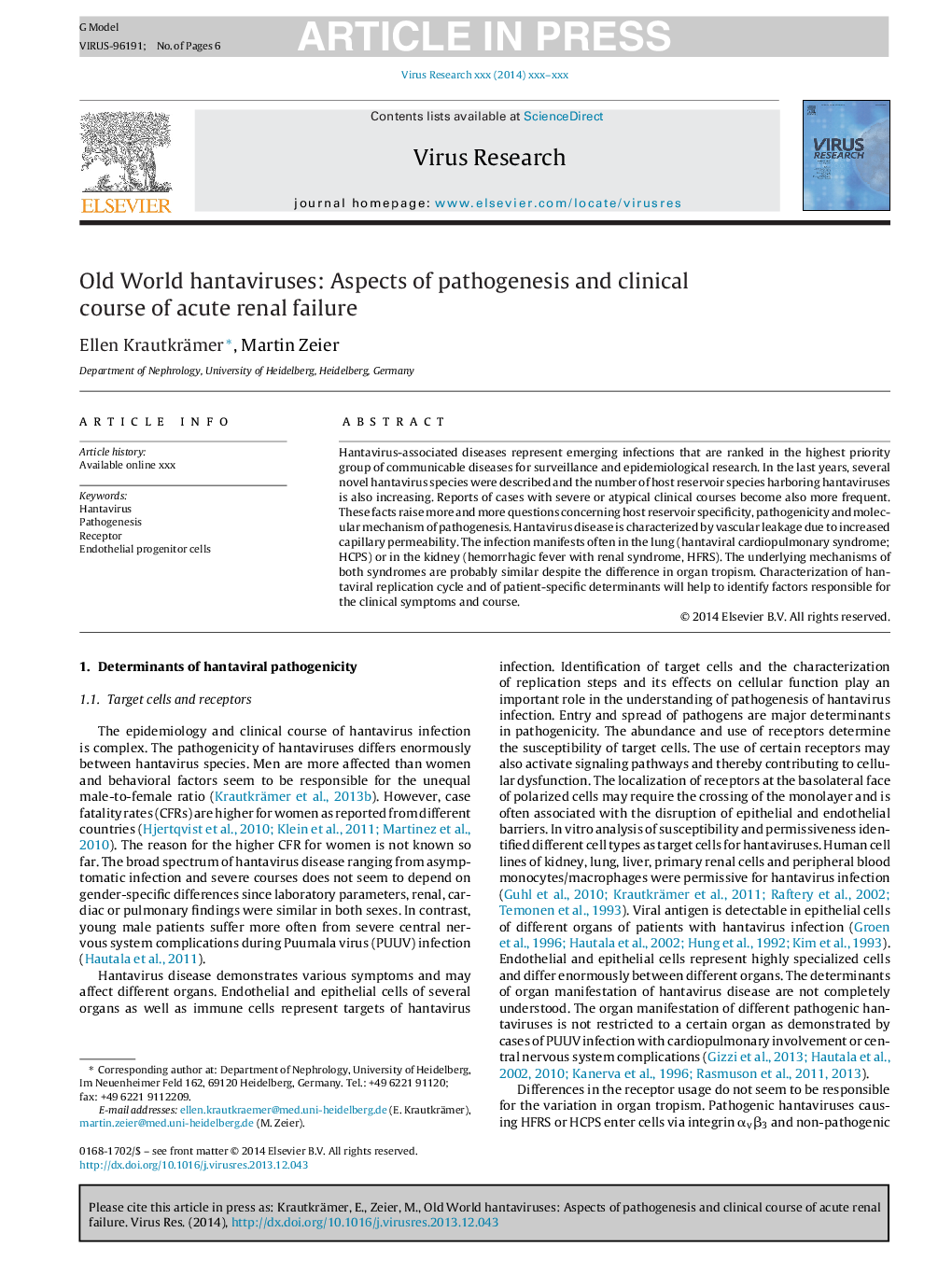| Article ID | Journal | Published Year | Pages | File Type |
|---|---|---|---|---|
| 6142539 | Virus Research | 2014 | 6 Pages |
Abstract
Hantavirus-associated diseases represent emerging infections that are ranked in the highest priority group of communicable diseases for surveillance and epidemiological research. In the last years, several novel hantavirus species were described and the number of host reservoir species harboring hantaviruses is also increasing. Reports of cases with severe or atypical clinical courses become also more frequent. These facts raise more and more questions concerning host reservoir specificity, pathogenicity and molecular mechanism of pathogenesis. Hantavirus disease is characterized by vascular leakage due to increased capillary permeability. The infection manifests often in the lung (hantaviral cardiopulmonary syndrome; HCPS) or in the kidney (hemorrhagic fever with renal syndrome, HFRS). The underlying mechanisms of both syndromes are probably similar despite the difference in organ tropism. Characterization of hantaviral replication cycle and of patient-specific determinants will help to identify factors responsible for the clinical symptoms and course.
Related Topics
Life Sciences
Immunology and Microbiology
Virology
Authors
Ellen Krautkrämer, Martin Zeier,
